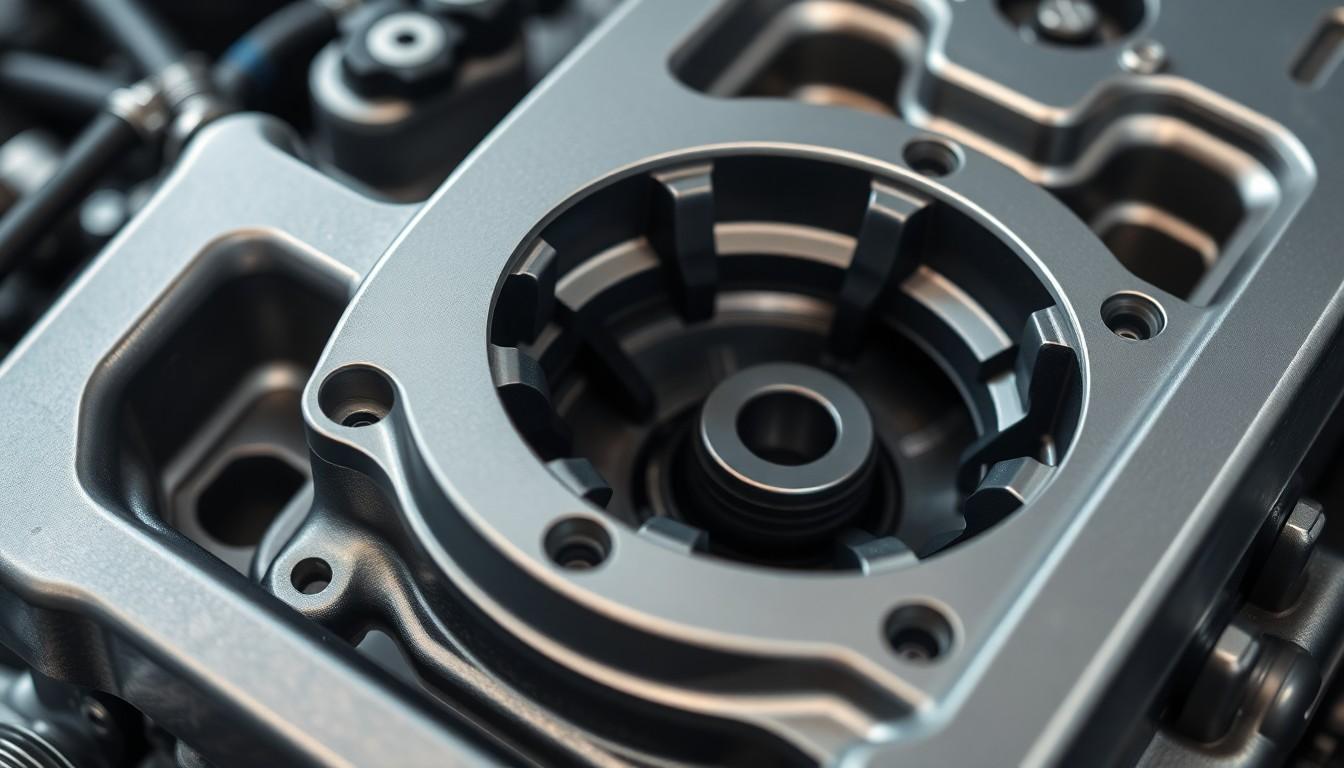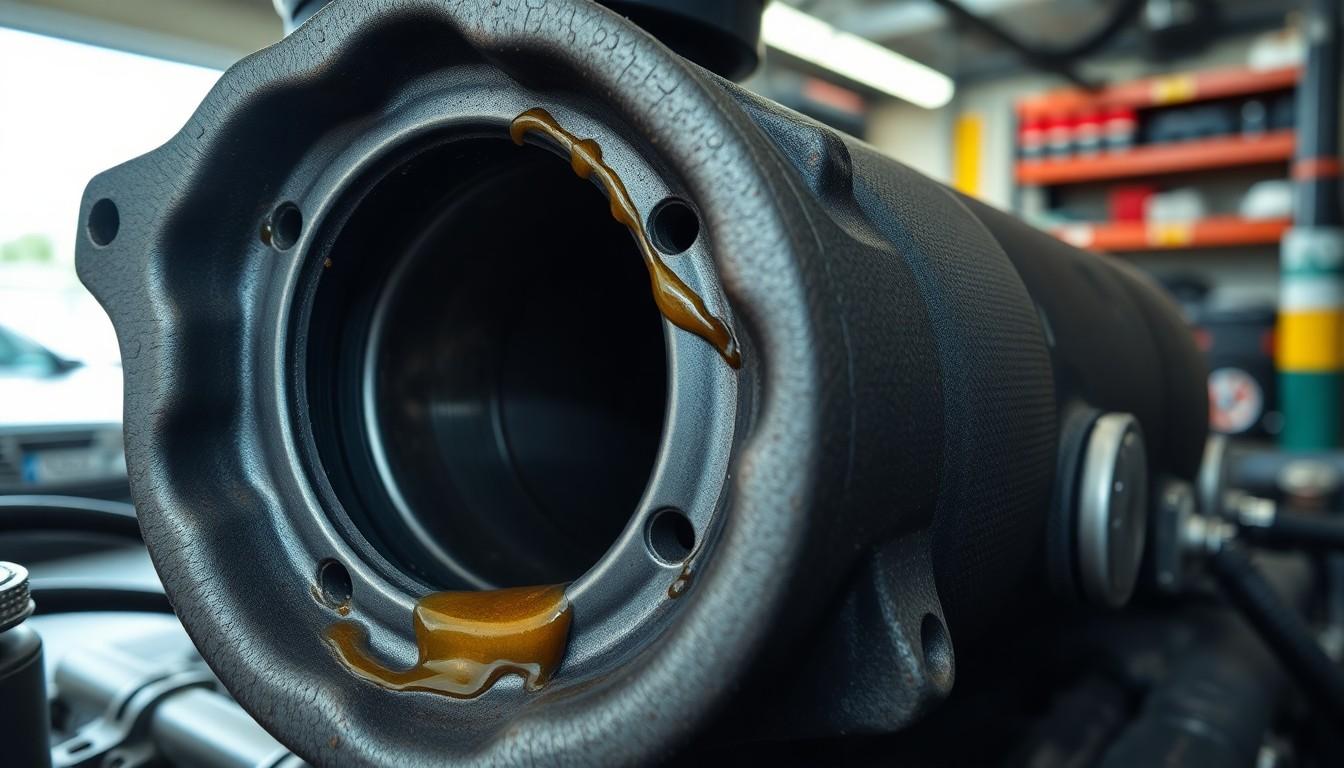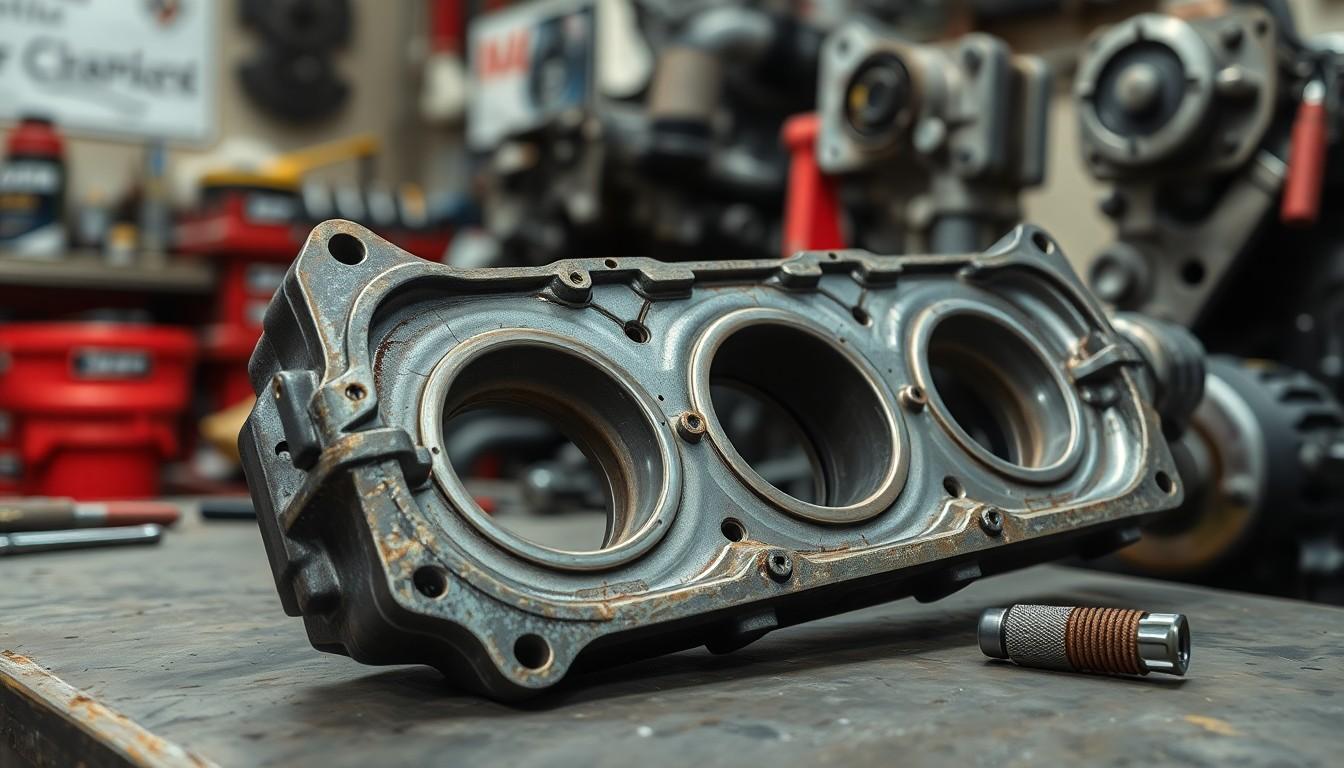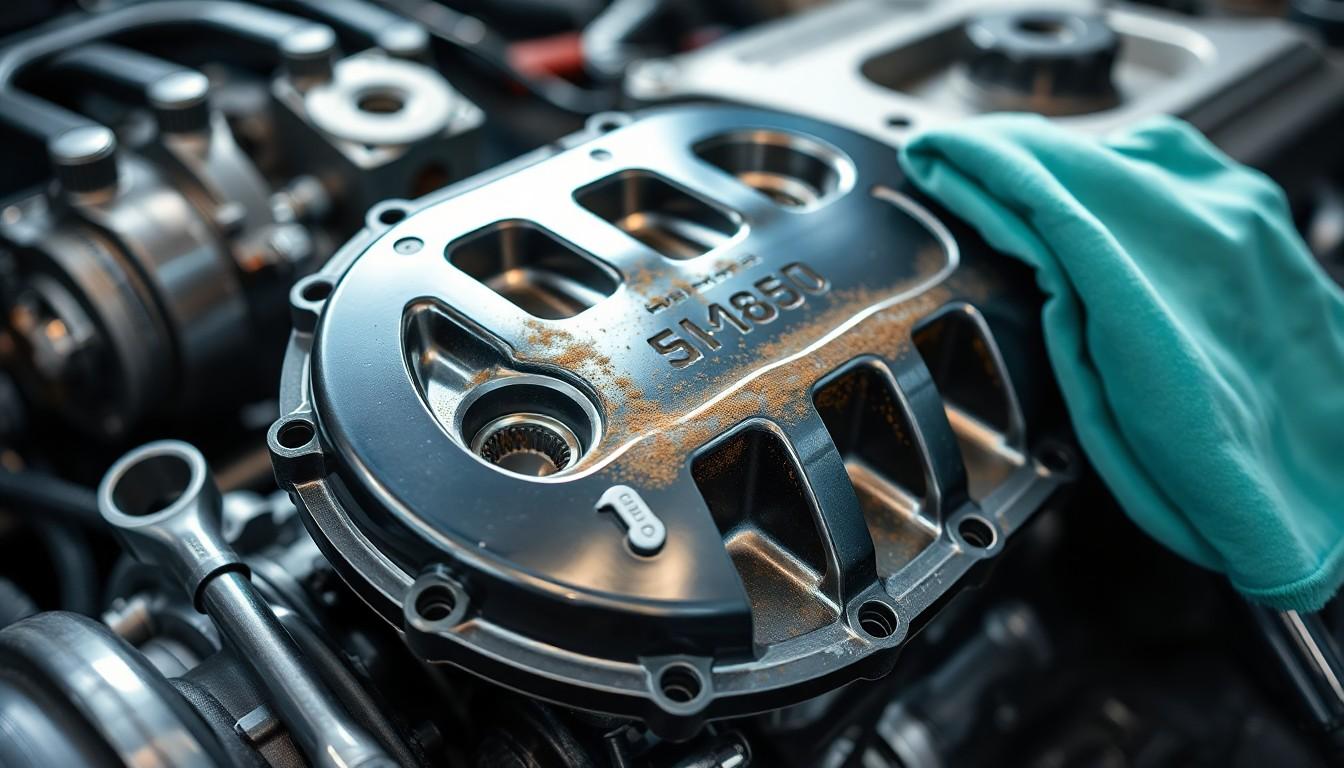Ever wondered what that metal cover sitting atop your engine is? That’s your camshaft cover – a crucial component that protects one of your engine’s most vital parts. While it might seem like just another piece of metal, this humble cover plays an essential role in keeping your engine running smoothly.
We’ve seen countless drivers overlook the importance of a properly functioning camshaft cover until it’s too late. This protective shield keeps oil inside your engine where it belongs while preventing dirt, debris, and moisture from wreaking havoc on your camshaft. Whether you’re a DIY mechanic or simply want to understand what’s under your hood better, knowing about this component can save you time, money, and potential headaches down the road.
What Is a Camshaft Cover: An Essential Engine Component
A camshaft cover is a protective housing that sits atop the cylinder head, enclosing the camshaft and valve train components. This crucial engine part, also called a valve cover or rocker cover, creates a sealed environment for the upper engine assembly. Constructed typically from aluminum, plastic, or steel, the cover prevents oil from leaking out while keeping contaminants from entering the engine’s inner workings.
The primary function of a camshaft cover is maintaining the internal lubrication system by containing the engine oil that lubricates the camshaft, valves, and other valve train components. Without this protective barrier, oil would spray throughout the engine bay, leading to decreased performance and potential engine damage. The cover also shields these sensitive mechanical parts from external debris, moisture, and dust that could accelerate wear or cause important mechanical failures.
Modern camshaft covers often incorporate additional features such as integrated PCV (Positive Crankcase Ventilation) valves, oil fill caps, and mounting points for ignition components. These design elements transform the cover from a simple protective shield into a multifunctional component that supports various engine systems. The gasket that seals the cover to the cylinder head is equally important, as it prevents oil leaks that can damage other engine components or create hazardous conditions.
Camshaft covers vary significantly across different vehicle makes and models, with designs specifically engineered to fit particular engine configurations. Some high-performance vehicles feature lightweight or specialized covers that enhance engine efficiency, while others prioritize durability for extended service life. Understanding your exact vehicle’s camshaft cover design helps in proper maintenance and troubleshooting of potential issues.
The Function and Purpose of a Camshaft Cover

A camshaft cover serves as a protective housing for critical engine components, primarily located at the top of the engine. This essential part encloses the valve train, rocker arms, and camshaft while ensuring the normal operation of the valve mechanism by housing components such as valves, valve springs, and valve guide tubes.
Protection Against Contaminants
The camshaft cover creates a barrier that prevents external contaminants from entering the valve chamber. Dust, dirt, moisture, and other impurities can’t infiltrate the sensitive valve mechanism when a properly sealed cover is in place. This protection isn’t just a minor benefit—it’s fundamental to maintaining the normal operation and extending the lifespan of valves and related engine components. Modern engines operate with tight tolerances and precise timing, making this protective function critical for preventing premature wear and potential mechanical failures.
Oil Containment System
Camshaft covers work in tandem with a valve cover gasket to create an effective oil containment system. The gasket forms a tight seal between the cover and the engine head, preventing oil from escaping the engine. This sealed environment keeps internal components properly lubricated while stopping messy and potentially dangerous oil leaks. Engine oil circulates through the valve train components, providing essential lubrication to moving parts like rocker arms and camshaft lobes. Without this containment system, oil would leak out, leading to inadequate lubrication, increased friction, and potentially catastrophic engine damage. Regular inspection of the seal integrity helps maintain optimal engine performance and prevents costly repairs due to oil leakage issues.
Anatomy of a Camshaft Cover

A camshaft cover’s structural design serves exact purposes in an internal combustion engine. It’s strategically positioned at the top of the engine block, covering vital components that require protection and proper sealing.
Material Composition
Camshaft covers come in various materials, each with exact advantages for engine performance and longevity. Aluminum stands out as a popular metal choice due to its excellent heat dissipation properties and lightweight characteristics. Steel covers offer superior durability for heavy-duty applications where strength is paramount. Modern engines increasingly use plastic camshaft covers, which reduce overall engine weight while providing adequate protection at a lower cost. The material selection typically depends on the engine’s design specifications, performance requirements, and cost considerations. Car manufacturers often make these decisions based on the vehicle’s intended use, with high-performance engines frequently featuring metal covers for better heat management.
Gasket and Sealing System
The camshaft cover’s sealing system forms a critical part of engine integrity through multiple components working together. A gasket sits between the camshaft cover and the cylinder head, creating an oil-tight seal that prevents leakage. This gasket is typically made from rubber, cork, or composite materials specifically designed to withstand high temperatures and exposure to engine oil. Bolts secure the cover to the cylinder head with precise torque specifications to ensure uniform pressure distribution across the gasket surface. The sealing system’s effectiveness directly impacts engine performance—a compromised seal leads to oil leaks that can reduce oil pressure, contaminate other engine components, and potentially cause smoking from the engine as oil contacts hot surfaces. Regular inspection of the gasket for signs of deterioration, hardening, or compression is essential for maintaining the engine’s sealing integrity.
Common Issues With Camshaft Covers

Camshaft covers experience several common problems that can affect engine performance and efficiency. These issues often develop gradually and may cause important damage if left unaddressed.
Oil Leaks and Their Causes
Oil leaks represent the most prevalent issue with camshaft covers, often manifesting as oil spots beneath the vehicle or visible engine oil residue. Faulty valve cover gaskets typically cause these leaks as they deteriorate over time due to constant exposure to heat cycles and engine oils. Loose or damaged bolts securing the camshaft cover to the cylinder head can compromise the seal integrity, creating pathways for oil to escape. The pressure inside the valve chamber forces oil through even the smallest gaps, leading to noticeable leakage around the edges of the cover or near bolt locations.
Cracking and Warping Problems
Camshaft covers face structural issues like cracking and warping that undermine their protective function. Overheating serves as a primary culprit for these problems, especially when heat dissipation mechanisms fail to operate correctly. The excessive thermal stress causes the cover material to expand beyond its design limits, resulting in permanent deformation or cracks. Physical damage from impacts or improper maintenance practices can create fractures in the cover, particularly in plastic variants. Material degradation affects camshaft covers over extended periods, with plastic covers becoming brittle and metal ones experiencing corrosion, both situations potentially leading to failure of the component’s sealing capabilities.
When to Replace Your Camshaft Cover

Knowing when to replace your camshaft cover is essential for maintaining your engine’s health and preventing costly repairs. Regular inspection can help you identify these critical warning signs early.
Oil Leaks
Oil leaks are the most common indicator of a failing camshaft cover or gasket. You’ll notice oil spots underneath your parked vehicle or oil accumulation on the engine itself. These leaks occur when the gasket deteriorates and can no longer maintain a proper seal between the cover and the engine block. Fresh oil stains on your driveway or garage floor often point directly to this issue.
Increased Engine Noise
A damaged camshaft cover allows compressed gases to escape and contaminants to enter the valve chamber, resulting in unusual engine sounds. You might hear tapping, clicking, or rattling noises coming from the top of your engine, especially during startup or acceleration. These sounds indicate that the cover’s seal integrity has been compromised, affecting the operation of valve components.
Reduced Engine Performance
Engine performance suffers significantly when the camshaft cover fails to maintain proper sealing. Your vehicle may experience decreased power output, rough idling, or poor fuel efficiency. The escape of combustion gases reduces cylinder pressure while contaminant infiltration interferes with valve operation. Many drivers notice hesitation during acceleration or difficulty maintaining consistent speed on highways.
Visible Signs of Wear
Physical examination of the camshaft cover can reveal telling damage signs. Look for cracks in the cover material, warping along the edges, or a deteriorated gasket with visible compression damage. Brittle, hardened, or oil-soaked gasket material indicates imminent failure. Corrosion or rust on metal covers also suggests replacement is needed.
Age and Mileage
Even without obvious failure symptoms, camshaft covers and gaskets should be inspected at exact intervals. Most manufacturers recommend checking the condition of your valve cover gasket between 50,000 to 100,000 miles, depending on your vehicle model. Older gaskets, particularly those made from cork or rubber compounds, naturally degrade over time from heat cycling and oil exposure.
Maintenance Tips for Camshaft Covers

Gasket Inspection and Replacement
Regular inspection of the valve cover gasket prevents potential problems. Look for signs of wear, deterioration, or oil leakage around the edges of your camshaft cover. Damaged gaskets compromise the seal between the cover and engine head, leading to oil leaks that can damage other engine components. Replace worn gaskets immediately to maintain proper engine function and avoid costly repairs down the road.
Tightening Bolts
Proper bolt tension ensures an effective seal for your camshaft cover. Check the bolts periodically to confirm they’re secured at the manufacturer’s recommended torque specifications. Loose bolts allow oil to escape, while overtightened ones can warp the cover or damage the gasket. Following your vehicle’s service manual for the correct torque settings prevents these issues and maintains the integrity of the sealing system.
Cleaning
Keeping the camshaft cover area clean extends its lifespan significantly. Remove any accumulated debris, oil residue, or dirt from the surface of the cover and surrounding areas. Clean covers prevent contaminants from working their way into the gasket seal and causing premature failure. A gentle degreaser and soft cloth work effectively for routine maintenance without damaging the cover materials.
Oil Level Check
Maintaining proper oil levels protects components under the camshaft cover from premature wear. Check your engine oil regularly using the dipstick, ensuring it falls within the recommended range. Low oil levels can lead to inadequate lubrication of the valve train, while overfilling can create excess pressure on the camshaft cover gasket. Regular oil level checks serve as an early warning system for potential problems with your engine’s lubrication system.
Visual Inspection
Periodic visual examinations of the camshaft cover identify potential problems before they become serious. Inspect for cracks, dents, or warping that might compromise the cover’s structural integrity. Check mounting surfaces for corrosion or damage that could prevent proper sealing. These visual inspections take just minutes but can save hours of repair time and hundreds of dollars in potential engine damage by catching issues early.
Conclusion
The camshaft cover might seem like a simple component but it plays a vital role in your engine’s health and performance. By keeping oil contained and contaminants out it protects crucial engine parts from premature wear and damage.
Regular inspection of your camshaft cover can save you from expensive repairs down the road. Whether you’re dealing with an aluminum steel or plastic cover understanding its function helps you make informed maintenance decisions.
We’ve seen how this protective housing works with gaskets to create an essential seal and how ignoring warning signs like oil leaks can lead to major engine issues. With proper care and timely replacement your camshaft cover will continue to safeguard your engine for many miles to come.
Frequently Asked Questions
What is a camshaft cover and why is it important?
A camshaft cover (also called valve cover or rocker cover) is a protective housing that shields the engine’s camshaft and valve train components. It’s crucial because it contains oil within the engine while preventing dirt, debris, and moisture from entering. Without a properly functioning camshaft cover, your engine could suffer from oil leaks, contamination, and ultimately expensive damage to critical engine components.
What materials are camshaft covers made from?
Camshaft covers are typically manufactured from aluminum, steel, or plastic. Aluminum covers offer excellent heat dissipation and lightweight properties. Steel covers provide superior durability. Plastic covers are cost-effective solutions for modern engines. The material choice depends on the specific engine design and performance requirements of the vehicle.
How do I know if my camshaft cover needs replacement?
Look for these warning signs: oil leaks around the engine, increased engine noise, reduced performance, visible damage (cracks or warping), and considering the age/mileage of your vehicle. Regular inspections are important as catching problems early can prevent more expensive repairs later. If you notice oil spots under your parked car, this could indicate a failing camshaft cover gasket.
What causes camshaft cover failure?
The most common causes include deteriorating gaskets that lose elasticity over time, loose mounting bolts that create seal gaps, material degradation (plastic becoming brittle or metal corroding), physical damage from impacts, and overheating that can warp the cover. Regular maintenance and avoiding engine overheating can extend your camshaft cover’s lifespan.
Can I replace a camshaft cover myself?
Yes, replacing a camshaft cover is generally a DIY-friendly task for those with basic mechanical knowledge. You’ll need the correct replacement cover, new gasket, proper tools, torque specifications, and about 1-2 hours depending on your vehicle. However, some modern engines have complex camshaft cover setups with integrated components that might require professional installation to ensure proper sealing.
How often should a camshaft cover be replaced?
There’s no set replacement interval for camshaft covers. Most will last 80,000-100,000 miles before the gasket starts deteriorating. Instead of time-based replacement, focus on regular inspections and address issues when they appear. With proper maintenance, some camshaft covers can last the lifetime of the vehicle, though gaskets typically need replacement every 50,000-100,000 miles.
How much does it cost to replace a camshaft cover?
Replacement costs vary widely depending on your vehicle make and model. The parts typically range from $30-$200 for the cover and gasket. Professional labor adds $100-$400 depending on engine complexity. DIY replacement saves on labor costs if you have the necessary tools and skills. Luxury and performance vehicles generally have higher replacement costs.
What happens if I ignore a leaking camshaft cover?
Ignoring a leaking camshaft cover can lead to serious consequences: oil loss causing engine component damage, oil contaminating electrical connections or the timing belt, environmental contamination, reduced fuel efficiency, and potentially catastrophic engine failure. What starts as a small leak can quickly escalate into a major repair bill if left unaddressed.

